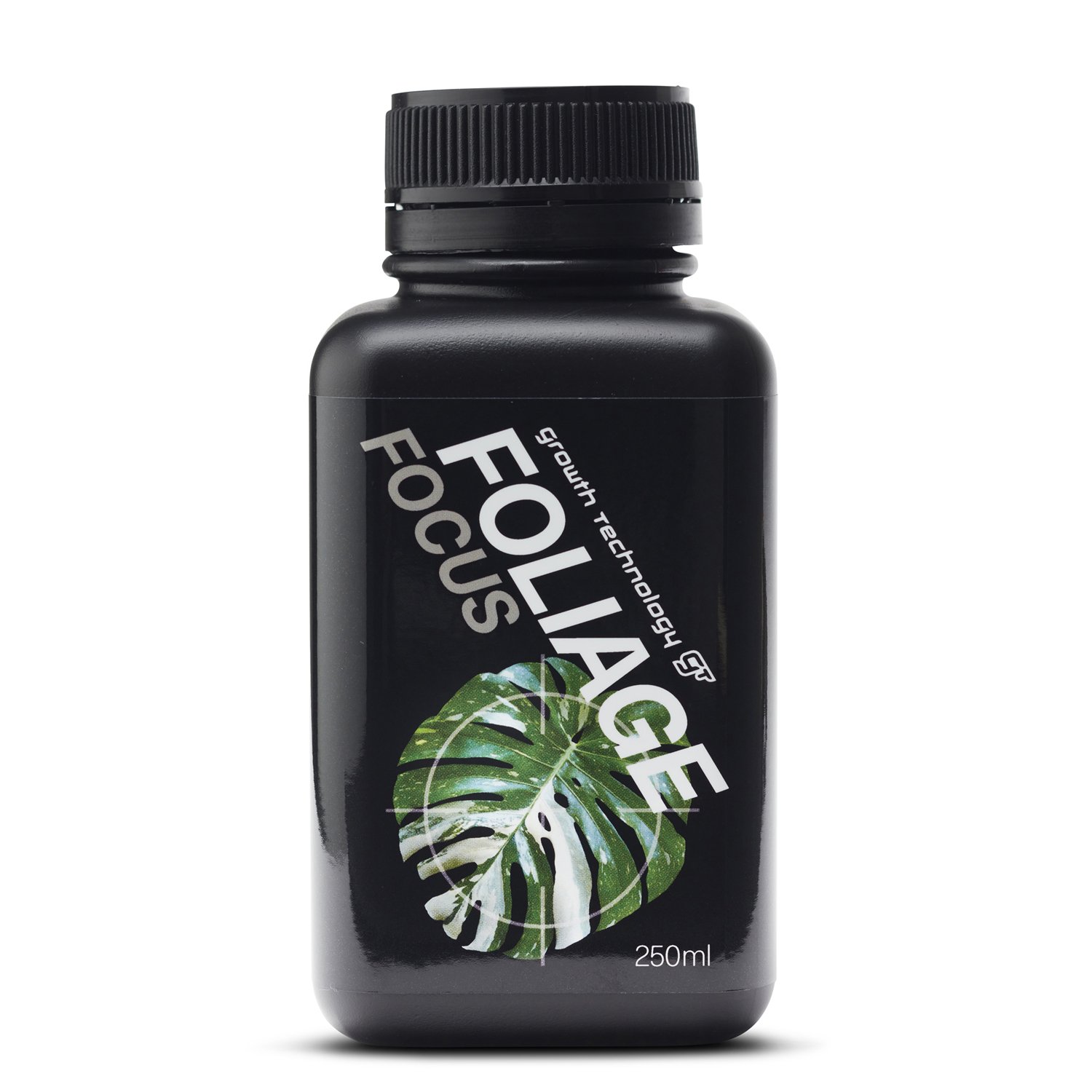The Science Behind GT
Everything your plants need. Nothing they don’t.
Some things change. Some stay the same. The first thing to know about Growth Technology (GT), is all formulas are made to the same high standards. GT makes what the industry calls ‘crop-specific’ fertilisers. Although that means there are differences between each formula, here are the things that don’t change.
GT includes calcium
Calcium is one of the 12 essential minerals all plants need. Yet the majority of fertilisers have no calcium. A calcium deficiency can cause cracked, split, cupped or curling leaves, slow, stunted or deformed growth, buds that form but die before flowering (such as bud blast in Orchids, Hoyas and African Violets), and premature browning and death of new growth.
All GT formulas include calcium. No guesswork or separate supplementation required. And at the high calcium levels most indoor plants require (even enough to meet the higher requirements of calcium-lovers such as Orchids, Hoyas, Peperomia, African Violets and Roses).
But how high is high? Just finding another fertiliser that includes calcium is hard enough, but one with adequate levels is even harder. The closest to GT averages 20ppm calcium once diluted. Well below the calcium levels our plants need. GT formulas vary, but the average is 80ppm calcium diluted. Much better.
Complete + balanced
GT includes all 12 essential nutrients plants require, and nothing they don’t, in crop-specific, balanced ratios. All at guaranteed levels, all listed on the label.
Because GT are crop-specific, it's not just about what you will find included (which is a big deal by itself), but also what you won't find. GT is guaranteed free of urea, sodium and chlorides (more about those coming up).
You also won't find nickel (for cereal crops like barley and legumes), cobalt (also for legumes like peas), or sodium (for C4 plants like spinach) on the label. Not essential, and known phytotoxins for indoor plants, even in small amounts.
GT gives your plants everything they need, and avoids anything they don't, reducing the risk of both deficiencies and excesses, including extra protection from fertiliser burn (one of the reasons it's so popular for the sensitive guys, like Orchids, Hoyas, Calathea, Monstera Albo (and variegated plants in general)... the list goes on!
No chlorides
Some fertilisers are higher-salt than others. Ingredients with a high salt index increase salt levels in the soil, faster than an ingredient with a low-salt index. Potassium chloride has the highest salt index of all common ingredients used in most fertilisers. That increases the risk of fertiliser burn. Excess can cause scorched leaf edges, smaller leaves and slow or stunted growth. Excess chlorides can also play havoc with soil pH which can cause some minerals to become toxic, and others to be locked out altogether. All GT formulas are guaranteed chloride free.
Free of urea
Urea is not the only nitrogen source available, but is a lot more affordable, one reason urea is the most common nitrogen source used in most fertilisers. Urea is more difficult for indoor plants in soil-less potting mixes to convert from urea, into the life-giving nitrogen they need.
Excess urea can accumulate in potted plants, with nowhere for roots to escape, increasing the risk of fertiliser burn. GT uses ammonium nitrate instead. More expensive, but also more available to plants, reducing the risk of both nitrogen deficiencies, and excess urea, increasing protection for your plants from fertiliser burn. All GT formulas are guaranteed urea free.
pH buffered
Soil pH matters. Too acidic and some nutrients turn toxic, while others like nitrogen and calcium get locked in the soil, harder for plants to absorb. Too alkaline and essentials like iron and phosphorus become locked and less available.
Look for the signs like leaf tip death (causing brown leaf tips), and plants that wilt even when properly watered. Most indoor plants prefer slightly acidic pH around 6. GT is pH buffered to create the ideal, slightly acidic pH plants thrive in, for maximum nutrient availability.
Chelated minerals
Pronounced 'key-lay-ted' (like a key in a door). Chelation 'unlocks' the essential metal nutrients such as iron and zinc. Metal nutrients can react in the soil, turning them into solids plants can't use, causing deficiencies even if your fertiliser is complete. Chelation adds organic molecules to protect precious metals, keeping them water-soluble and available to your plants. All metal nutrients in GT are chelated.



